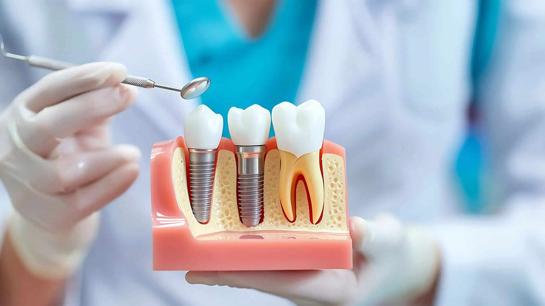ACDF Abroad: The Down-to-Earth Guide to Cervical Fusion Surgery Overseas
Why Do People Even Start Considering Spinal Surgery Abroad for ACDF?
There’s no one “aha!” moment. For most, the path starts with neck pain—maybe tingling down the arm, a numb thumb, or sharp, shooting aches that just won’t stop. A specialist says the words “herniated disc” or “pinched nerve.” You try everything: physio, injections, rest. But if the pain is stubborn, life starts to feel like it’s on hold.
At some point, your doctor brings up ACDF—Anterior Cervical Discectomy & Fusion. It’s a mouthful, but really, it’s about taking pressure off a trapped nerve by removing a damaged disk and fusing the bones together. It works. The issue? In many places—especially in the US or UK—it’s expensive, delayed by waitlists, or tangled up in confusing insurance talk.
Suddenly, “spinal surgery abroad” or “surgery overseas” moves from fringe idea to “maybe I should find out if this is actually done by real people.”
Let’s unpack all of it. No sugarcoating. No jargon for the sake of it. Just honest, practical advice.
ACDF Explained: Why This Surgery—and What’s Actually Involved?
Alright, let’s step through ACDF—like you’d tell a friend over coffee:
Anterior Cervical Discectomy & Fusion means:
- Going in from the front (“anterior”) of your neck (not the back—less muscle to cut).
- Taking out the problem disk (the “discectomy” part).
- Fusing the two vertebrae with a small spacer/cage and plate (with bone material to help them “knit”).
It’s common for people to worry about losing some flexibility, but most barely notice in daily life. What they do notice? Arm pain often melts away, numbness improves, and—ideally—life opens up again.
The big decision is where, how, and with who you trust your neck. And for more Western patients, that means weighing spinal surgery abroad as a serious contender.
What’s Prompting More People to Have ACDF Surgery Overseas?
Here’s what I keep hearing, time and again:
1. Cost, Plain and Simple
ACDF is pricey. Prices at home? Eye-watering unless you have gold-plated insurance. Even then, co-pays add up. Clinics specializing in surgery overseas often quote all-in costs that are a fraction of domestic bills. It might sound wild, but that sort of number is life-changing if you’re on a budget.
2. Waiting Lists (and Painful Delays)
Rates of neck problems are high—delays are, too. If you’re told “wait six months,” or “come back after another MRI,” it feels like you’re stuck in medical limbo. Overseas clinics targeting international patients usually book ACDF surgeries with only weeks (sometimes days)’ notice.
3. Technology and Experience
Here’s the part that’ll surprise you: Much of the world built up high-tech ORs, latest-generation imaging, and surgeons with international credentials specifically to serve those seeking spinal surgery abroad. For ACDF, latest fluoroscopy, advanced cages, biologics—all there in the best centers.
4. More Personal Attention
When you’re traveling for health, you want answers, not just appointments. Reputation-focused clinics (the ones thriving on patient recommendations) tend to dedicate staff—bilingual, patient-savvy coordinators—to walk you through every step from your first email.
Who Is ACDF Abroad Actually For? (Don’t Let Anyone Rush You)
It’s worth pausing for reality: Not everyone with neck pain or an MRI showing a bulge needs surgery, let alone overseas. But it makes sense for:
- People with confirmed nerve root compression (by MRI) and symptoms that won’t improve with therapy, time, or medication.
- Anyone stuck with unaffordable costs, insurance denials, or impossible waitlists at home.
- Those craving more control—choosing their own doctor, timeline, and setting.
If that’s you, surgery overseas may well be a sane, safe next step (if you do your homework).
Step-by-Step: What It Really Looks Like to Get ACDF Overseas
Here’s the journey—without skipping the anxiety, the paperwork, or the details.
1. Research and Reach Out
You Google, you read, you worry. Then you send your scans and story to a few clinics. Reputable clinics don’t brush you off to a call center. You get a real surgeon or coordinator on email, sometimes a video call. Take your time. Push back if anything sounds off.
2. Getting a Surgical Plan
A proper clinic reviews your MRI and history, then spells out the surgical plan: how many levels, what kind of spacer, type of hardware, infection control, length of stay—plus exact costs. It shouldn’t be hand-waving; you want specifics.
3. Travel and Prep
You’ll fly in, sometimes with help pre-arranging the hotel (never hurts to have a companion). Pre-op tests: labs, a repeat scan to confirm the plan, sometimes a cardiology check.
4. The Surgery
Most ACDF operations take 1–2 hours. It’s usually under general anesthesia. Modern clinics use nerve monitoring, microscopic tools, and fluoroscopy to make everything precise. Most folks are up and walking the same day or next; hospital stay is 1–3 nights, sometimes a bit longer for multi-level fusions.
5. Early Recovery
Physio starts almost right away—a gentle focus on preventing stiffness, checking swallowing, and preventing blood clots. Some clinics bundle in postoperative care (wound care, meds) until you’re ready for discharge.
6. Discharge and Follow-Up
You’ll leave with full documentation, digital copies, and a plan for follow-up—often a mix of remote video consults, email check-ins, and advice for your home doctor.
What Makes a Great Overseas ACDF Center? How Do You Judge?
Don’t trust guesswork. Look for:
- International accreditation (ISO, JCI, or national boards in spine/neurosurgery).
- Proven surgeon bios (not just “20 years experience”—look for actual number of ACDFs done per year, fellowships, global training).
- Modern diagnostics: 1.5T/3T MRI, digital X-ray/CT, fluoroscopy suite.
- Operating rooms that are sparkling and up-to-date: Ask to see them—virtual tours are common now.
- English-speaking staff and detailed written instructions.
- A team approach—not just the surgeon, but anesthesia, perioperative, and rehab specialists.
- Clear package pricing. You want to know: Does it include imaging, anesthesia, postop meds, extra hospital days if needed?
Specialization and Teamwork
The best clinics for ACDF abroad don’t just have a “star surgeon”—they run teams used to complex, international cases:
- Board-certified neurosurgeons or orthopedists specializing in cervical spine
- Dedicated anesthesiologists, often with regular foreign traveler experience
- Spine surgery-trained nurses for perioperative care
- Physical therapists to guide early movement and explain safe home rehab
- Crucially: patient coordinators fluent in your language, who’ll stick with you until you’re truly on the mend
The Tech and the Tools: Not “Second-Tier” at Legitimate Centers
A few points for the cautious:
- Modern imaging: High-res MRI for planning, fluoroscopy and computer navigation for precision.
- Biologic fusion options: Some places offer advanced bone grafts or cages.
- Nerve monitoring: Almost standard now, but always ask—it helps prevent “wake up with a surprise” nerve issues.
- Sterility and infection control: Ask to see protocols, numbers, and what happens if you have a rare infection. Hospitals competing for overseas patients take this very seriously.
The Money Question: Is Spinal Surgery Abroad Really Cheaper? And What Do You Get?
| Factor | At Home (US/UK/Canada) | Overseas (Package) |
|---|---|---|
| Cost | $25,000–$60,000+ | $7,000–$18,000 (typical) |
| Wait Time | Weeks–months | Days–few weeks |
| Tech | Good-varying | Often equal/better |
| Surgeon Access | Sometimes brief | Often direct, detailed |
| Recovery Plan | Local, integrated | Written + remote check-ins |
| Aftercare Help | Seamless, local | Needs planning; often coordinated remotely |
Add up flights, hotels, the companion’s costs—then decide if it’s the right call.
Risks and Real-World Worries—Don’t Skim This Bit
Let’s be clear:
- Every spinal surgery carries potential risks—bleeding, infection, hoarse voice from retracted nerves, difficulty swallowing, nerve injury, even fusion failure.
- Having the operation abroad adds logistical risk. If you need unexpected follow-up or revision, you’ll need a home base plan.
How to de-risk:
- Make sure your home doctor knows your plan. Set up a follow-up before you leave for your surgery overseas.
- Keep every record (printed and digital), especially operative reports and implant product information.
- Build a little extra recovery time into your travel plans; flying too soon isn’t wise.
How Results Stack Up: What’s Realistic from ACDF Abroad?
At high-quality centers:
- Nerve pain relief: Most patients (80–90%) see dramatic improvement, especially with classic “shooting” pain down an arm.
- Function recovery: Return to work in 2–6 weeks for single-level fusions, a bit longer for more complex cases.
- Fusion rates: With modern cages and grafts, long-term union is achieved in nearly all cases.
- Complication rates: Infection and nerve injury are rare (usually under 2%), readmission rates are even lower—if you follow instructions and rehab.
Be wary of places promising “absolutely no risk” or “miracle results.” Proper clinics will always talk honestly about the 2–4% who need revision or additional care, no matter where you have surgery.
Sizing Up Fit: Should You Consider ACDF Abroad?
Strong candidates:
- Persistent nerve symptoms unresponsive to conservative care
- A clear diagnosis by imaging, and a confirmed surgical candidate (ask your own doc for a second opinion if possible)
- Frustrated by waitlists or cost barriers at home
- Comfortable with travel and some uncertainty
If you’re more anxious, prefer family close, or need detailed aftercare for complex health problems, staying local might be better.
Tips for Anyone Seriously Weighing Surgery Overseas
- Bring company. A spouse, friend, or a professional companion makes the whole process—before and after surgery—ten times easier.
- Don’t rush. If a clinic or coordinator hurries decision-making or doesn’t answer the hard questions, walk away.
- Travel flexibly. Don’t book your return flight for two days post-op; give yourself some recovery margin.
- Get aftercare in writing. Including restrictions on movement, driving, work, and swallowing precautions.
- Check insurance basics. Most plans won’t help with spinal surgery abroad. Budget for surprises.
- Be honest with your home doctor. Good surgeons will help you integrate aftercare, even if they didn’t do the operation themselves.
Final Thoughts: Does Spinal Surgery Abroad for ACDF Make Sense?
For many, having ACDF overseas is about regaining control—over pain, over time lost in the system, and even over finances. It’s also about doing your homework, not leaping for just any cheap deal, and demanding real-world transparency from your care team, wherever they are.
Is it right for everyone? No.
Is it a real, viable option? Absolutely—for those willing to invest in research, clear communication, and a bit of courage.
If you’re still on the fence, that’s normal—questions are a sign you value your health. Take your time. Take notes. And trust your own instincts.
Here’s to fewer limitations, more movement, and decisions you can look back on with genuine relief.























